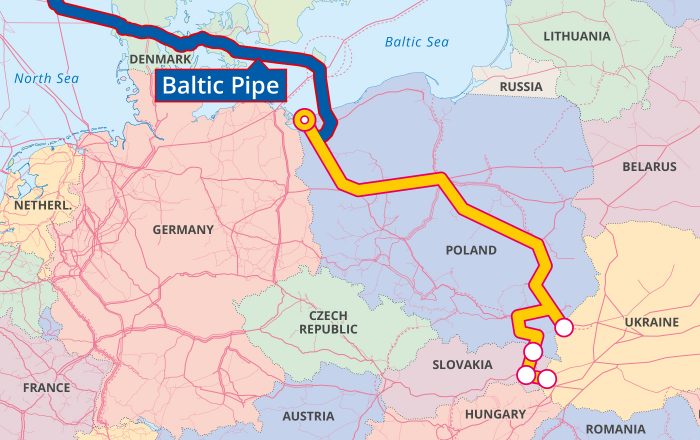On Tuesday, September 27, to strengthen international partnerships, Pawel Stanczak, acting General Director of Gas TSO of Ukraine, took part in the opening ceremony of the Baltic Pipe gas pipeline, connecting Norway and Poland via Denmark.
As noted by the Head of GTSOU, potentially it becomes possible for Ukrainian customers to buy gas from this pipeline either in Norway or in Poland for subsequent supply to Ukraine. At the same time, Ukraine, in particular our colleagues from Ukrtransgaz, can offer European partners the most capacious Europe system of Ukrainian underground gas storage, allowing them to store more than 10 billion cubic meters of gas.
Baltic Pipe is due to start transporting gas this Saturday, October 1, with an initial capacity equivalent to 2 to 3 billion cubic meters per year. It was expected to reach its peak capacity of 10 billion cubic meters of gas per year in early 2023. However, the Polish and Danish sides recently reported that the works are “progressing well” and full capacity will be reached ahead of schedule – by the end of November this year.
Today it is technically possible to transport Norwegian gas to Ukraine either directly from Poland (guaranteed capacity daily) or through the Polish-Slovak interconnector.
“First of all, Baltic Pipe is a real diversification of gas supply routes, which will contribute to the strengthening of Europe’s energy security. This project is important for Poland as a key element in achieving independence from russian energy sources. For Ukraine, this route also has the potential as another opportunity to import gas. There is no doubt that Baltic Pipe will contribute to creating the more apolitical gas market,” says Pawel Stanczak.
It should be noted that Gas TSO of Ukraine is constantly expanding cooperation with strategic partners to diversify the sources and routes of natural gas supply to Ukraine. During the year, the Company doubled its import capacity from 27 million cubic meters per day to 54 million cubic meters per day.
Currently, Ukraine has the opportunity to buy liquefied gas from Norway, the USA, and Qatar, regasify it at LNG terminals in Poland and Lithuania, and transport it to Ukraine.
